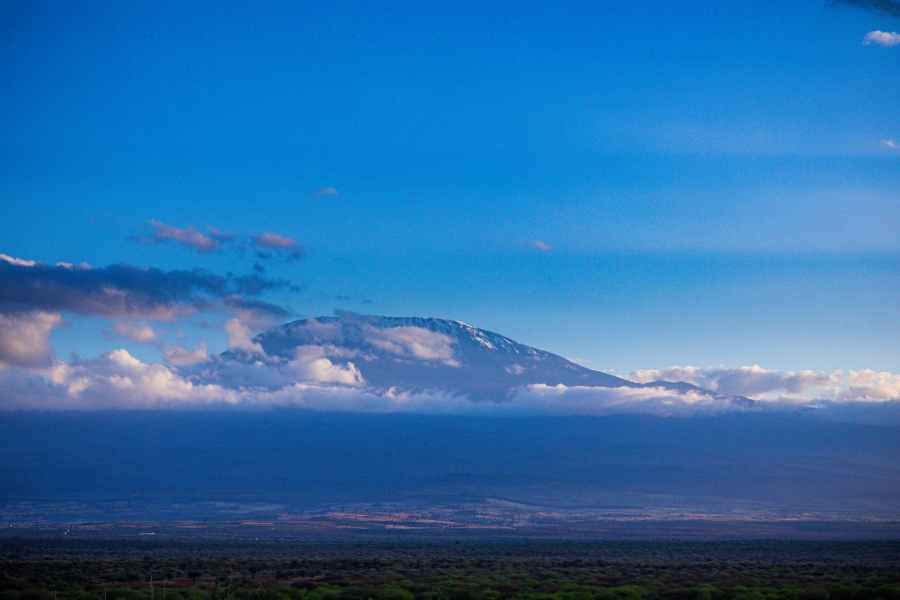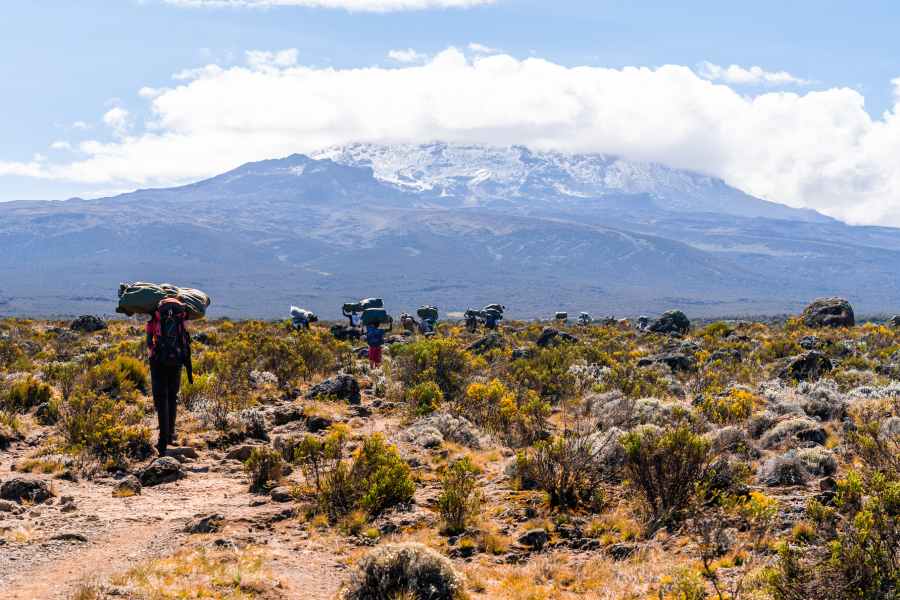Mount Kilimanjaro Treks For Beginners
Download Travel Details >PRIVATE & SMALL GROUP TOURS TO THE WORLD'S BEST DESTINATIONS
Join Us For A Safari In Tanzania

Can A Beginner Climb Kilimanjaro?
For many adventure-seekers, climbing to the summit of Mount Kilimanjaro with a small group tour is a bucket list item. But not all hikers are experienced trekkers, which leads them to ask if a beginner can climb Kilimanjaro. The short answer is yes – Kilimanjaro is a great hike for first-time climbers. However, there are a few things to know before you attempt to climb to the top of Kilimanjaro’s 19,341-foot-high summit. Keep reading to learn how to guarantee a successful summit attempt to Kilimanjaro’s peak!

The Best Time Of Year To Climb Mount Kilimanjaro
Kilimanjaro’s location on the equator means you can plan a hike at any time. There are certain times of the year, however, that are more suitable for climbing than others. The dry seasons of January to March and June to October offer the best conditions for trekking up Kilimanjaro, with clear skies and more stable weather patterns. Here’s a breakdown, by season, of the best time to trek Kilimanjaro:
- January – early March: planning your climb during the early months of the year means that you will stay dry on your trek. This is an ideal time of year to climb Mount Kilimanjaro because the weather is dry and pleasant, and there is less traffic on the trail.
- June – September: these four months are the most popular times of year to plan a trek to Mount Kilimanjaro’s summit. The weather during this time tends to be stable, which attracts tourists and causes trails to be more crowded. If you don’t mind the extra foot traffic, the peak tourist season is an excellent time to book your climb.
- The off-season: April - May and October - November are considered Kilimanjaro’s “off-season.” However, the trails are still open to hikers if you schedule your summit attempt during this season. Although the weather may be less than optimal in the off-season, you will be less likely to encounter crowds during your climb.
Three Key Facts To Remember For An Off-Season Climb
 Can a beginner climb Kilimanjaro in the off-season? Yes! It doesn’t matter what time of year you plan your hike. Kilimanjaro's beauty transcends seasonal changes, offering a unique experience each time you hit the trails. However, if you are going during the so-called off-season, there are three key things to keep in mind:
Can a beginner climb Kilimanjaro in the off-season? Yes! It doesn’t matter what time of year you plan your hike. Kilimanjaro's beauty transcends seasonal changes, offering a unique experience each time you hit the trails. However, if you are going during the so-called off-season, there are three key things to keep in mind:
- Weather: it will rain during your off-season hike, that’s guaranteed! Be prepared to get wet during your climb and pack accordingly.
- Trail conditions: heavy rains can make the trails muddy and slick, making your trek to the top more strenuous.
- Visibility: if enjoying the panoramic views from your climb is important, be aware that adverse weather conditions and rain can obscure these views.
Hikers can also expect a few more obstacles during an off-season climb. These obstacles may include icy trails, unpredictable weather conditions, and reduced visibility along the route. And while many don’t mind the trail’s rugged terrain, beginners may have difficulty with the extra hazards. If you’re a new trekker, the best time to trek Kilimanjaro is January through March or June through September.
Booking A Guide For Your Trek
One of the most important things you need to know about climbing Mount Kilimanjaro is that you will be required to climb with a guide – you cannot climb on your own! That being said, booking a local tour agency to manage your climb is a good way to guarantee a successful summit, especially if you are a less-experienced hiker. Local tour agencies often have experienced guides who know the terrain well and can provide valuable support and guidance throughout the climb.
In addition to being required, a guide will help keep you safe during your multi-day, high-altitude climb. Your guide will be knowledgeable about the terrain and trail conditions, will have experience with the ever-changing weather conditions as you climb, and will be able to monitor your health and safety throughout the expedition. Experienced guides will be able to help you manage altitude sickness, fatigue, and the other challenges that come with such a lengthy hike.
Picking Your Route To The Summit
Your tour guide can help you select the best way to climb Kilimanjaro. Seven trails lead to Kilimanjaro’s summit, but they vary in difficulty, terrain, and time. Among these seven trails, the Marangu route is known for being the most popular due to its gradual ascent and comfortable hut accommodations along the way. Beginners are often advised to choose a longer route like the Marnagu, which will help them acclimate to altitude and get their legs used to long days on the trail. Most guides recommend one of two routes for beginners.
- The Marangu Route – This trail is the oldest of the seven trails that lead to Kilimanjaro’s peak. It takes about six days to make it up and down Kilimanjaro using this route. It is also the easiest and most comfortable route, perfect for beginners or those who are not confident in their physical abilities. You will also carry less in your pack if you choose this route; sleeping arrangements for each night are in designated dormitory heights scattered along the trail, rather than in tents.
- The Machame Route – This route is a step up in difficulty from the Marangu Route but is still a good option for beginners to climb Kilimanjaro. It is also the most popular way to reach Kilimanjaro’s peak. This route takes seven days to reach the summit alone – which is much longer than the Marangu Route’s six-day round trip. The Machame Route is the more rugged route of the two, so guides add additional time for traveling. If you are looking for a more technical experience, this is the route for you!
How To Guarantee A Successful Climb
Yes, a beginner can climb Kilimanjaro. Kilimanjaro is a great mountain for first-time climbers, especially if they have prepared for their trek. That being said, many experienced hikers fail to reach Kilimanjaro’s peak each year. Although it is not a technical hike, dealing with altitude can be tricky for even the most physically fit. Here are a few tips to guarantee your success:
- Pace yourself – the best way to climb Kilimanjaro is to go slow! Remember that you are hiking for several days is helpful. Taking your time and not rushing helps you avoid fatigue. Remember – it’s the journey, not the destination.
- Take frequent breaks – stop frequently to keep from getting burned out in the long run. This will become increasingly important as you get closer to the summit, where the air becomes thinner and your chances of falling prey to altitude sickness increase with each step.
- Acclimate – if you can acclimate to higher altitudes before your trek, you will feel more prepared. A good way to do this is to arrive in Tanzania a few days before your trek begins and get used to the thin air with a few day hikes.
- Hydrate – stay hydrated during your climb! This literally can make or break your summit attempt.
Newbie or not, now that you know the best time to trek Kilimanjaro, you can begin planning your trip. Keep in mind that Kilimanjaro is a great mountain for a first-time climber, as long as you plan, prepare, and pay attention to your guide along the way. Just don’t forget to enjoy the amazing views on the way to the top, too. There are many different tours to view Africa from the top of Kilimanjaro!

